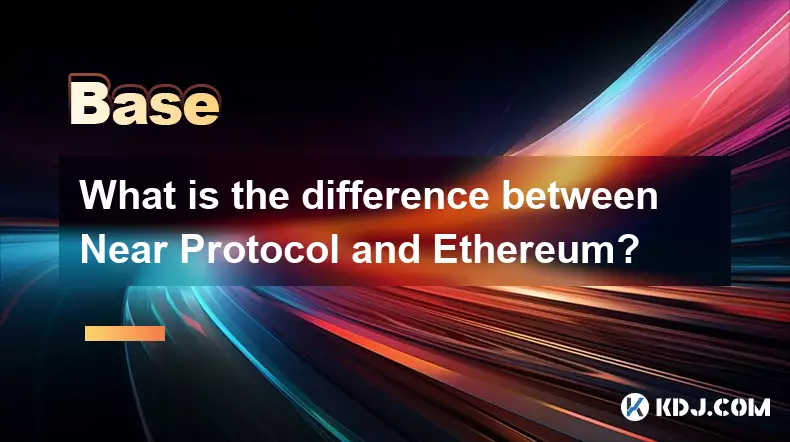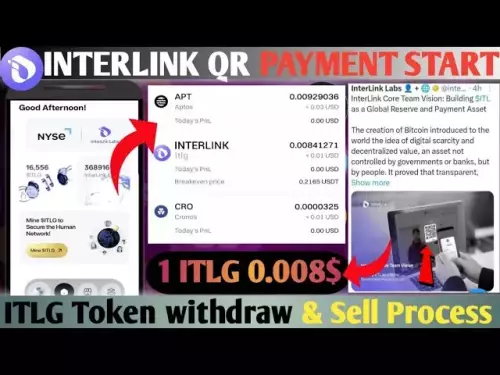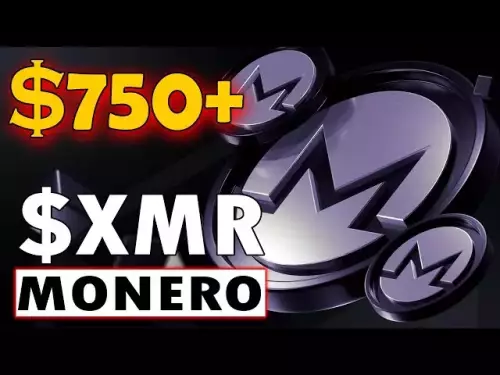-
 bitcoin
bitcoin $107208.295278 USD
-1.54% -
 ethereum
ethereum $3874.629914 USD
-1.38% -
 tether
tether $1.000440 USD
0.03% -
 bnb
bnb $1089.465513 USD
-5.53% -
 xrp
xrp $2.327672 USD
-1.65% -
 solana
solana $184.766505 USD
-0.73% -
 usd-coin
usd-coin $1.000076 USD
0.02% -
 tron
tron $0.310632 USD
-1.99% -
 dogecoin
dogecoin $0.187615 USD
-1.60% -
 cardano
cardano $0.633389 USD
-2.75% -
 ethena-usde
ethena-usde $0.999553 USD
0.03% -
 hyperliquid
hyperliquid $35.608231 USD
-4.13% -
 chainlink
chainlink $16.876114 USD
-3.98% -
 stellar
stellar $0.312239 USD
-0.91% -
 bitcoin-cash
bitcoin-cash $473.262969 USD
-7.09%
What is a "flash loan" in DeFi?
Flash loans enable instant, uncollateralized borrowing in DeFi, allowing arbitrage and debt restructuring within a single transaction—but can be exploited for price manipulation.
Oct 18, 2025 at 07:18 am

Understanding Flash Loans in Decentralized Finance
1. A flash loan is a unique type of uncollateralized loan available in the decentralized finance (DeFi) ecosystem. Unlike traditional loans, it does not require borrowers to lock up assets as collateral. The entire transaction must be completed within a single blockchain block. If the borrower fails to repay the loan instantly, the transaction reverts, leaving no changes on the blockchain.
2. These loans are powered by smart contracts on platforms like Aave and dYdX. The smart contract logic ensures that the loan is only executed if repayment conditions are met within the same transaction. This mechanism eliminates credit risk for lenders while enabling complex financial operations for developers and traders.
3. Flash loans have become instrumental in executing arbitrage strategies across different decentralized exchanges. Traders can borrow large sums to exploit price differences between markets, repay the loan, and keep the profit—all within one atomic transaction.
4. Another common use case involves collateral swapping or refinancing debt positions in lending protocols. Users can alter their exposure without needing personal funds upfront, leveraging borrowed capital to restructure their DeFi portfolio efficiently.
5. Despite their utility, flash loans have been exploited in several high-profile attacks. Malicious actors manipulate market prices using borrowed funds, triggering liquidations or inflating token values to drain liquidity from vulnerable protocols.
How Flash Loans Exploit Market Inefficiencies
1. One of the most powerful applications of flash loans is arbitrage trading. When a token is priced differently on two decentralized exchanges, a user can borrow funds via a flash loan to buy low on one platform and sell high on another. The profit remains after repaying the loan and associated fees.
2. Price oracles play a crucial role in these operations. Some exploits occur when attackers use flash loans to temporarily manipulate asset prices reported by oracles. By flooding a market with borrowed tokens, they create artificial supply shocks that distort valuation data.
3. Protocols relying on time-delayed or volume-weighted average price (TWAP) mechanisms are particularly susceptible. Even short-term manipulation during a single block can lead to incorrect pricing, which attackers leverage to trigger unfavorable liquidations or mint excessive rewards.
4. The speed and atomicity of flash loans make them ideal for exploiting such inefficiencies. Since everything happens in one transaction, there is no risk of front-running or partial execution, ensuring predictable outcomes for sophisticated operators.
5. Developers building DeFi applications must account for potential flash loan attacks during design. Implementing circuit breakers, validating price feeds through multiple sources, and requiring minimum trade volumes help mitigate risks associated with sudden, large-scale trades.
Risks and Security Implications of Flash Loans
1. While flash loans themselves are secure due to their self-reverting nature, the protocols interacting with them may not be. Many vulnerabilities arise from improper handling of external price data or flawed incentive structures that can be gamed using borrowed capital.
2. Several high-value hacks have occurred where attackers used flash loans to manipulate governance tokens or drain liquidity pools. For example, borrowing millions in stablecoins allowed hackers to influence voting mechanisms or artificially inflate yields before withdrawing assets.
3. Auditing smart contracts for flash loan resilience has become a standard practice. Security firms now simulate attack scenarios involving large-scale borrowing to test how systems respond under stress conditions.
4. Transparency in DeFi allows anyone to analyze past exploits and learn from them. Open-source codebases enable rapid community response, but also mean that malicious actors study the same information to identify weak points.
5. As the DeFi space matures, new patterns emerge to detect anomalous behavior linked to flash loans. Monitoring tools track sudden spikes in borrowing activity and flag transactions that follow known exploit templates.
Frequently Asked Questions
What prevents someone from defaulting on a flash loan?The smart contract automatically cancels the entire transaction if the borrowed amount plus fees are not repaid before the block concludes. No state changes are recorded on the blockchain if repayment fails.
Can flash loans be used for long-term investments?No. Flash loans exist only within the scope of a single transaction and cannot be held over time. They are designed for immediate, self-contained operations such as arbitrage or debt restructuring.
Are flash loans exclusive to Ethereum?While originally popularized on Ethereum, similar mechanisms now exist on other blockchains supporting smart contracts, including Binance Smart Chain, Polygon, and Avalanche, provided the protocol implements the necessary logic.
Do users pay interest on flash loans?Borrowers pay a small fee, typically 0.09% on platforms like Aave, regardless of the loan size. This fee goes to the liquidity providers of the lending pool and serves as compensation for the temporary use of funds.
Disclaimer:info@kdj.com
The information provided is not trading advice. kdj.com does not assume any responsibility for any investments made based on the information provided in this article. Cryptocurrencies are highly volatile and it is highly recommended that you invest with caution after thorough research!
If you believe that the content used on this website infringes your copyright, please contact us immediately (info@kdj.com) and we will delete it promptly.
- Bitcoin, Crypto Coins, and 2025: What's the Hype?
- 2025-10-19 06:25:15
- Dogwifhat's Price Stabilization: Is a Reversal Rally on the Horizon?
- 2025-10-19 06:45:13
- Uniswap's UNI Navigates Open Interest Dip: What's Next?
- 2025-10-19 06:45:13
- Solana, TVL, and Meme Coins: A New Era?
- 2025-10-19 06:25:15
- Crypto Presales Explode: Is the Next Big Thing Hiding in Plain Sight?
- 2025-10-19 07:05:12
- Steve Jobs, American Innovation, and a $1 Coin: A New York State of Mind
- 2025-10-19 06:50:11
Related knowledge

How do decentralized identity (DID) solutions work?
Oct 14,2025 at 11:36pm
Understanding Decentralized Identity in the Blockchain Ecosystem1. Decentralized identity (DID) solutions are built on blockchain networks, allowing i...

What is the difference between Near Protocol and Ethereum?
Oct 15,2025 at 08:01am
Near Protocol and Ethereum: Core Architectural Differences1. Near Protocol operates on a sharded blockchain architecture known as Nightshade, which al...

What does it mean for code to be "open source" in crypto?
Oct 12,2025 at 01:54pm
Understanding Open Source in the Cryptocurrency Ecosystem1. In the context of cryptocurrency, open source refers to software whose code is publicly ac...

What is the purpose of a "testnet"?
Oct 12,2025 at 09:01am
Understanding the Role of Testnets in Blockchain Development1. A testnet serves as a parallel version of a blockchain network, designed specifically f...

How to avoid phishing scams in crypto?
Oct 13,2025 at 06:18pm
Understanding Common Crypto Phishing Tactics1. Cybercriminals frequently use fake websites that mirror legitimate crypto exchanges or wallet platforms...

What is the difference between single-collateral and multi-collateral Dai?
Oct 12,2025 at 05:18pm
Understanding Single-Collateral Dai1. Single-Collateral Dai (SCD) was the original version of the Dai stablecoin launched by MakerDAO in 2017. It allo...

How do decentralized identity (DID) solutions work?
Oct 14,2025 at 11:36pm
Understanding Decentralized Identity in the Blockchain Ecosystem1. Decentralized identity (DID) solutions are built on blockchain networks, allowing i...

What is the difference between Near Protocol and Ethereum?
Oct 15,2025 at 08:01am
Near Protocol and Ethereum: Core Architectural Differences1. Near Protocol operates on a sharded blockchain architecture known as Nightshade, which al...

What does it mean for code to be "open source" in crypto?
Oct 12,2025 at 01:54pm
Understanding Open Source in the Cryptocurrency Ecosystem1. In the context of cryptocurrency, open source refers to software whose code is publicly ac...

What is the purpose of a "testnet"?
Oct 12,2025 at 09:01am
Understanding the Role of Testnets in Blockchain Development1. A testnet serves as a parallel version of a blockchain network, designed specifically f...

How to avoid phishing scams in crypto?
Oct 13,2025 at 06:18pm
Understanding Common Crypto Phishing Tactics1. Cybercriminals frequently use fake websites that mirror legitimate crypto exchanges or wallet platforms...

What is the difference between single-collateral and multi-collateral Dai?
Oct 12,2025 at 05:18pm
Understanding Single-Collateral Dai1. Single-Collateral Dai (SCD) was the original version of the Dai stablecoin launched by MakerDAO in 2017. It allo...
See all articles










































































